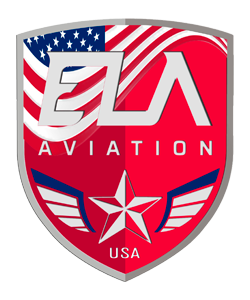The requirements for flying a gyrocopter are more accessible than many people imagine, but they should not be taken lightly. This type of aircraft, also known as autogyro, combines the maneuverability of a helicopter with the stability of a light aircraft, offering a unique flight experience, safe and full of sensations. However, like any aircraft, it requires compliance with certain regulations, specific training and basic medical conditions before being able to fly it legally. At ELA Aviation we know that many people do not know these requirements, so today we will tell these requirements in all kinds of details.
Requirements for flying a gyrocopter
Below, we will show you the most important requirements to consider before starting your gyrocopter trip.
Training and licensing: the first step to flying a gyrocopter
In order to legally fly a gyrocopter, it is essential to obtain an ultralight pilot’s licence (ULM) with a specific rating for this type of aircraft. This training consists of a theoretical part and a practical part. In theory subjects such as air navigation, meteorology, regulation, basic mechanics of the autogyro and emergency procedures are studied. Upon successful completion of the theoretical examination, the student must complete a minimum number of hours of flight with an instructor. The number of hours may vary from school to school, but typically between 15 and 20 hours of flight time is required, including one supervised solo flight prior to obtaining an authorization.
Medical conditions and legal limitations for flying a gyrocopter
One of the requirements for flying a gyrocopter is to have a medical certificate that the pilot is fit to fly. Unlike other more demanding aeronautical licences, only a LAPL or similar medical certificate issued by an authorised centre is required for the gyrocopter. This examination focuses on aspects such as vision, hearing, reflexes, general state of health and medical history.
In terms of legal limitations, gyrocopters cannot fly over densely populated urban areas, unauthorized commercial airports or restricted airspace.
Requirements for flying a gyrocopter: Equipment, maintenance and documentation
In addition to personal requirements, it is essential that the gyrocopter is registered, insured and regularly maintained. The aircraft must have its airworthiness certificate, up-to-date technical reviews and updated maintenance book. The pilot is responsible for checking before each flight the general condition of the aircraft: control system, blades, fuel level, landing gear and all critical elements for the flight. It is also recommended, although not mandatory in all cases, that the gyrocopter has a radio, transponder and GPS system, especially if flying in areas where there is more air traffic or defined routes. These systems increase safety and allow for better coordination with other aircraft and air traffic control if necessary.
What’s the best thing about flying in a gyrocopter?
We know that everything we have explained about licenses, regulations and requirements may seem dense and technical, but the reality is that flying in a gyrocopter offers many advantages… and yes, also a lot of fun.
- Feeling of absolute freedom: the gyrocopter flies at low altitude and with great maneuverability, allowing you to enjoy the landscape like never before, literally feeling part of the environment.
- Short take-offs and smooth landings: you don’t need a long runway or complicated infrastructure: you can take off and land in very little space, which gives you a lot of autonomy.
- Direct contact with the air: with open or semi-closed cabins, flying in a gyrocopter is a total sensory experience.
At ELA Aviation we have been designing and manufacturing high-performance gyrocopters for decades with the highest standards of safety, comfort and maneuverability. If you want more information contact us.
